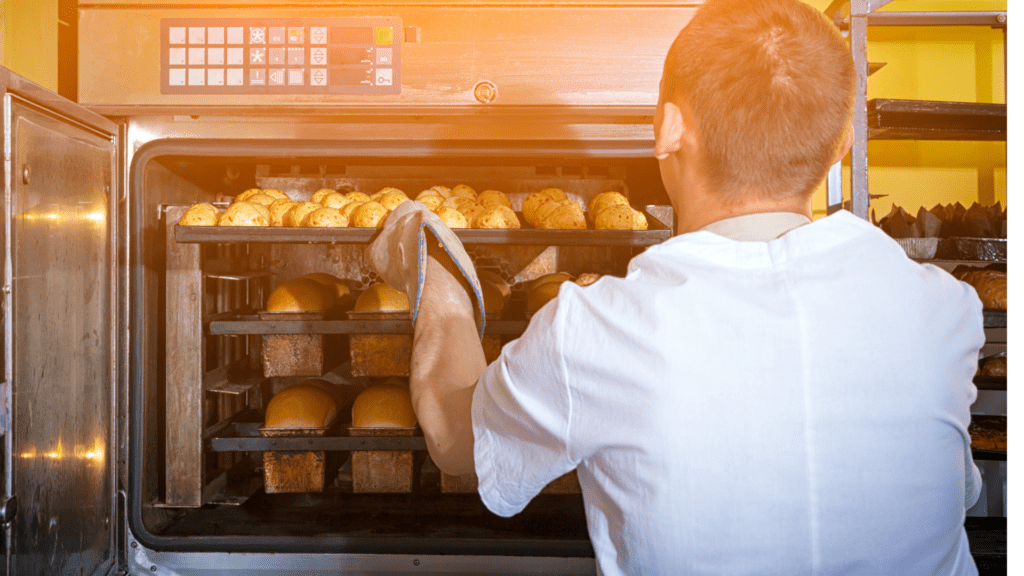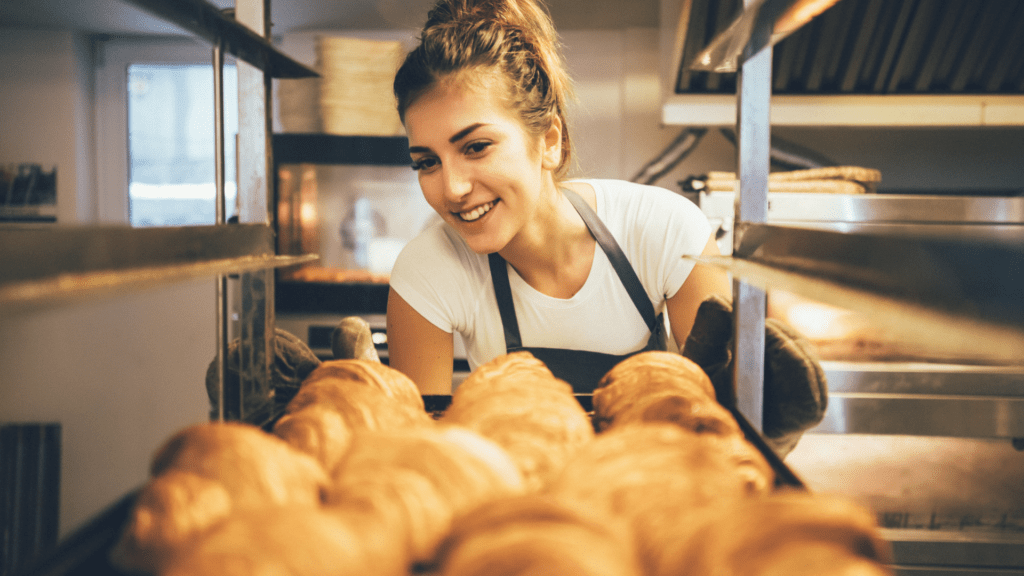In the world of baking, few things rival the satisfaction of creating a perfectly risen, flavorful loaf of bread. For centuries, bakers around the globe have harnessed the magic of fermentation to elevate their creations to new heights. In this exploration of the art of baker’s alchemy, we delve into the secrets of mastering fermented dough – a transformative process that turns simple ingredients into a symphony of flavors and textures.
The Science Behind Fermentation
To truly master the art of baker’s alchemy, one must first understand the science behind fermentation. At its core, fermentation is a biological process where yeast and bacteria break down sugars in the dough, producing carbon dioxide and alcohol. This gas, trapped within the dough’s structure, causes it to rise, resulting in the airy and light texture that defines well-fermented bread.
Yeast, the unsung hero of the fermentation process, is a living organism that requires the right environment to thrive. The temperature, hydration level, and time play crucial roles in fostering the ideal conditions for yeast to produce the desired flavors and textures in the dough.
Selecting the Right Flour
The journey to mastery begins with the selection of the right flour. Each type of flour brings its unique characteristics to the table. For a classic, chewy bread, high-protein flours like bread flour are ideal. On the other hand, if you’re aiming for a lighter, airier texture, all-purpose flour might be your best bet. Experimenting with different flour blends allows you to discover the nuances of flavor and texture that each brings to your fermented dough.
Perfecting the Starter
At the heart of every artisanal loaf lies a well-nurtured starter. Creating a sourdough starter from scratch is an art in itself. Mix flour and water, let it sit, and witness the magic unfold as wild yeast and bacteria colonize the mixture. Regular feeding and attention are essential to develop a robust and flavorful starter. Once mastered, a good starter becomes a baker’s secret weapon, infusing each loaf with a unique character and depth of taste.
The Art of Kneading
Kneading is not just a physical activity but a rhythmic dance with the dough. Achieving the perfect balance between elasticity and structure requires practice and patience. As you knead, you’re not merely manipulating the dough; you’re guiding the fermentation process. The repeated folding and stretching align the gluten structure, allowing the dough to capture and retain the gases produced during fermentation.
Temperature and Time: The Twin Pillars of Fermentation
Controlling temperature and time is the key to unlocking the full potential of your fermented dough. While a warm environment accelerates fermentation, a slower, cooler rise yields more complex flavors. Experiment with different proofing times and temperatures to find the perfect balance for your desired outcome. The beauty of this process lies in the infinite variations it offers, allowing you to tailor your bread to suit your taste preferences.
Incorporating Flavorful Additions
Elevate your fermented dough by introducing flavorful additions. From herbs and spices to nuts and dried fruits, the possibilities are limited only by your imagination. These additions not only enhance the taste but also add layers of texture, creating a multi-sensory experience with every bite. Be bold in your experimentation, and let your creativity shine through in the final product.
Shaping and Scoring: The Final Touches
The artistry of baker’s alchemy extends to the final stages of bread-making – shaping and scoring. Shaping the dough not only influences its appearance but also impacts the distribution of gases, contributing to the texture of the final product. Meanwhile, scoring the dough allows it to expand in a controlled manner during baking, creating beautiful patterns and ensuring an even rise.
The Joy of Baking: A Therapeutic Journey
Beyond the delectable end result, the mastery of fermented dough offers a therapeutic journey for the baker. The tactile experience of working with the dough, the anticipation as it rises, and the heavenly aroma that fills the kitchen – all contribute to a holistic sense of satisfaction. Baking becomes a meditative process, allowing you to disconnect from the hustle of everyday life and reconnect with the simple joy of creation.
Troubleshooting Common Challenges
While the journey to mastering fermented dough is undoubtedly rewarding, it’s not without its challenges. Understanding and overcoming common pitfalls can elevate your baking skills to new heights.
Overcoming Dense Loaves: The Rise Dilemma
One common hurdle for bakers is achieving the desired rise without ending up with a dense loaf. If your bread consistently turns out heavy, consider adjusting your proofing time or increasing the hydration level in your dough. A longer, slower rise can often contribute to a lighter texture, allowing the yeast to work its magic more thoroughly.
Tackling Uneven Fermentation: The Temperature Puzzle
Inconsistent fermentation can result in uneven textures and flavors. To address this, pay close attention to the temperature during the fermentation process. A controlled environment, such as a proofing box or a warm kitchen corner, ensures that the entire batch undergoes fermentation at a uniform pace.
Dealing with Sourdough Troubles: The Starter Conundrum
Creating and maintaining a sourdough starter can be a stumbling block for many bakers. If your starter lacks vigor or imparts undesirable flavors, consider adjusting the feeding ratio or experimenting with different types of flour. A healthy and active starter is the backbone of successful sourdough baking.
Cracking the Code of Crust Perfection: Baking Techniques
Achieving the perfect crust is an art in itself. Experiment with different baking temperatures and steam techniques to discover the ideal conditions for your preferred crust. A hot, steam-filled oven at the beginning of the baking process can create a crisp exterior while allowing the interior to maintain its desired moisture.
Enhancing Flavor Complexity: Time as an Ally
For those seeking a more complex flavor profile, consider incorporating an extended cold fermentation process. Allowing the dough to ferment in the refrigerator for an extended period can deepen the flavors, offering a nuanced taste that evolves over time. Patience becomes the secret ingredient for a truly remarkable bread.
Beyond the Loaf: Exploring Fermented Dough Variations
The mastery of fermented dough extends beyond traditional loaves of bread. Bakers can explore a myriad of variations, each offering its unique charm and flavor.
Artisanal Pizza Dough: A Culinary Canvas
Transform your pizza nights into a gourmet experience by crafting your artisanal pizza dough. Experiment with different flour blends and fermentation times to achieve a crust that strikes the perfect balance between chewy and crisp. The beauty of homemade pizza lies not just in the toppings but in the foundation of a well-crafted dough.
Sweet Beginnings: Enriched and Sweet Doughs
Fermented dough isn’t limited to savory delights. Enriched and sweet doughs open the door to a world of pastries, cinnamon rolls, and brioche. Incorporate butter, eggs, and sugar into your dough for a luxurious texture and a hint of sweetness. These treats showcase the versatility of fermented dough in the realm of desserts.
Conclusion: A Baker’s Journey Unveiled
As you embark on the path to mastering fermented dough, embrace the learning process with open arms. Each challenge is an opportunity to refine your skills, deepen your understanding, and unleash your creativity in the kitchen. The art of baker’s alchemy is a journey, not a destination, and with every batch, you edge closer to becoming a true artisan.
So, roll up your sleeves, dust your hands with flour, and let the transformative power of fermentation guide you. Whether you’re creating a rustic sourdough loaf, a delicate pastry, or a perfect pizza crust, remember that the joy lies not just in the end result but in the process itself. Happy baking, and may your kitchen be filled with the aroma of success!


